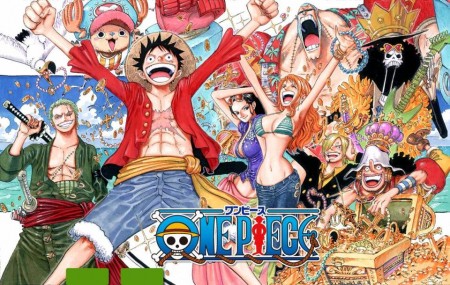Ask John: Why Do Some Americans Dislike the Way One Piece Looks?

Question:
I’ve heard some American fans complain that they dislike One Piece and can’t get into it because of the unusual art style. Why is this such an issue for some American fans while Japanese fans have little to no objection with the odd art style?
Answer:
For countless viewers, particularly those in America, anime is not primarily a foreign art; anime is engrossing counter-culture. I don’t want to propose a qualitative distinction between “serious” or “good” anime fans who apprehend the narrative, literary, cultural and artistic nuances of anime versus “casual” or “mainstream” fans that primarily or only apprehend the superficial and obvious attributes of anime. The reasons for any person’s fascination with anime are subjective, individual, and uniquely valid. However, for the purpose of definition and explanation, there are countless American viewers attracted to anime only because anime is “different” and engaging on more levels than typical American comparable entertainment media. In short, countless American anime viewers are attracted to anime because it looks cool and stylish, because it’s kinetic and electric, because it depicts fantastic sensuality, action, and violence. In rational, objective analysis, the two Afro Samurai installments suffered from minimal narrative, weak script, simplified characterizations, stock action choreography, and lousy editing. Yet the two Afro Samurai installments were still massive mainstream hits in America because they’re overtly and obviously stylish looking, fast paced, violent, and consciously trendy. They epitomize brainless entertainment that’s flavorful yet empty calorie, and such anime entertainment is entirely satisfying for many American viewers.
American viewers that want to be satiated by superficial, easily digestible, immediately satisfying visual entertainment gravitate toward familiar designs and expected rewards. Dragon Ball Z is hugely popular in America because it delivers explosive, superhuman fighting between muscular characters reminiscent of the America superheroes that every American viewer is familiar with. Akira became hugely successful in America because the film illustrated exactly what American viewers expected to see from a speculative cyberpunk cartoon. The Jubei Ninpucho and Hokuto no Ken movies because cult favorites in America because they delivered the constant barrage of slickly produced ultra-violence that Americans presume is taboo in animation. Cowboy Bebop became a fan favorite because it literally bridged the gap between familiar American culture and surprising, fascinating Eastern art and philosophy.
The same American viewers that are immediately receptive to designs and content that satisfies their preconceived expectations or demands are often nonplussed by anime that doesn’t conform to their pre-developed expectations. American viewers roundly rejected Madhouse’s 1999 Alexander Senki television series because it featured character designs by Korean American animator Peter Chung. Today American otaku acknowledge Production I.G as one of Japan’s preeminent production studios and respect Hiroyuki Imaishi for his work on Evangelion, FLCL, Gurren Lagann, and Panty & Stocking with Garterbelt. But American fans largely rejected the 2004 OVA Dead Leaves because its visual design doesn’t adhere to the typical American presumption of what stylish, provocative “anime” is supposed to look like. Select American fans balk at One Piece because the show’s uniquely stylish character designs don’t fall within the current American boundaries of “stylish” or “cool.” Thus, for many mainstream American viewers attracted to anime because anime is “cool” and “counter-culture,” watching a show that doesn’t appear to be cool, stylish, or counter-culture offers no reward.
Japanese viewers typically don’t recoil from unconventional or even awkward character designs because Japanese viewers have more familiarity with a wider range of character design and comic art visual styles than typical American viewers. Mainstream Americans are used to typical American 2D animation being recognizable as a variation of the designs introduced in the 1940s and ’50s by Walt Disney. Mainstream Americans expect anime and its descendents to likewise conform to a generally identifiable uniform look. Japanese otaku that have grown up with manga are innately used to flowery shoujo art styles, very rough, experimental seinen art styles, conventional big-eyed anime designs descended from Osamu Tezuka’s influence, and shounen manga designs which routinely strive to be outrageous and unique. While mainstream Americans believe that the character design style of One Piece looks odd and non-anime-esque, Japanese viewers see the artistic design of One Piece as exactly what a shounen action/adventure serial should look like. Mainstream Americans who enjoy watching anime because anime is cool and unique want to see anime that’s immediately recognizable to them as “anime.” Japanese viewers approaching a shounen adventure serial instinctively expect to see unconventional, unusual, and even weird character designs and highly distinctive artistic style that doesn’t look like conventional anime. The unique character designs and artistic style of shounen titles including One Piece, Eyeshield 21, Shaman King, Hokuto no Ken, St. Seiya, Soul Eater, Yu-Gi-Oh, Yowamushi Pedal, Keroro Gunso, and Nurarihyon no Mago all affirm this Japanese expectation that shounen titles look like shounen titles, not like conventional otaku-oriented anime.
Add a Comment
You must be logged in to post a comment.


Anime fans didn’t reject Alexander because Peter Chung worked on it. They had plenty of other reasons to dislike it. And they hated Dead Leaves, because it was throwaway garbage which Spike and Mike fans would ignore.
And they hated Dead Leaves, because it was throwaway garbage which Spike and Mike fans would ignore.
People like what they like. Beauty is in the eye of the beholder.I like One Piece and Dead Leaves. I used to not care for some of the older style anime, but now I have the entire Ranma 1/2. Probably will repurchase it on blu-ray. Definitely. Shows I tend to dislike are the ones that do not hold my attention. I purchased Venus Wars on a whim and I loved it. You should also take a look at Birth. It reminds me of Möbius’ work.